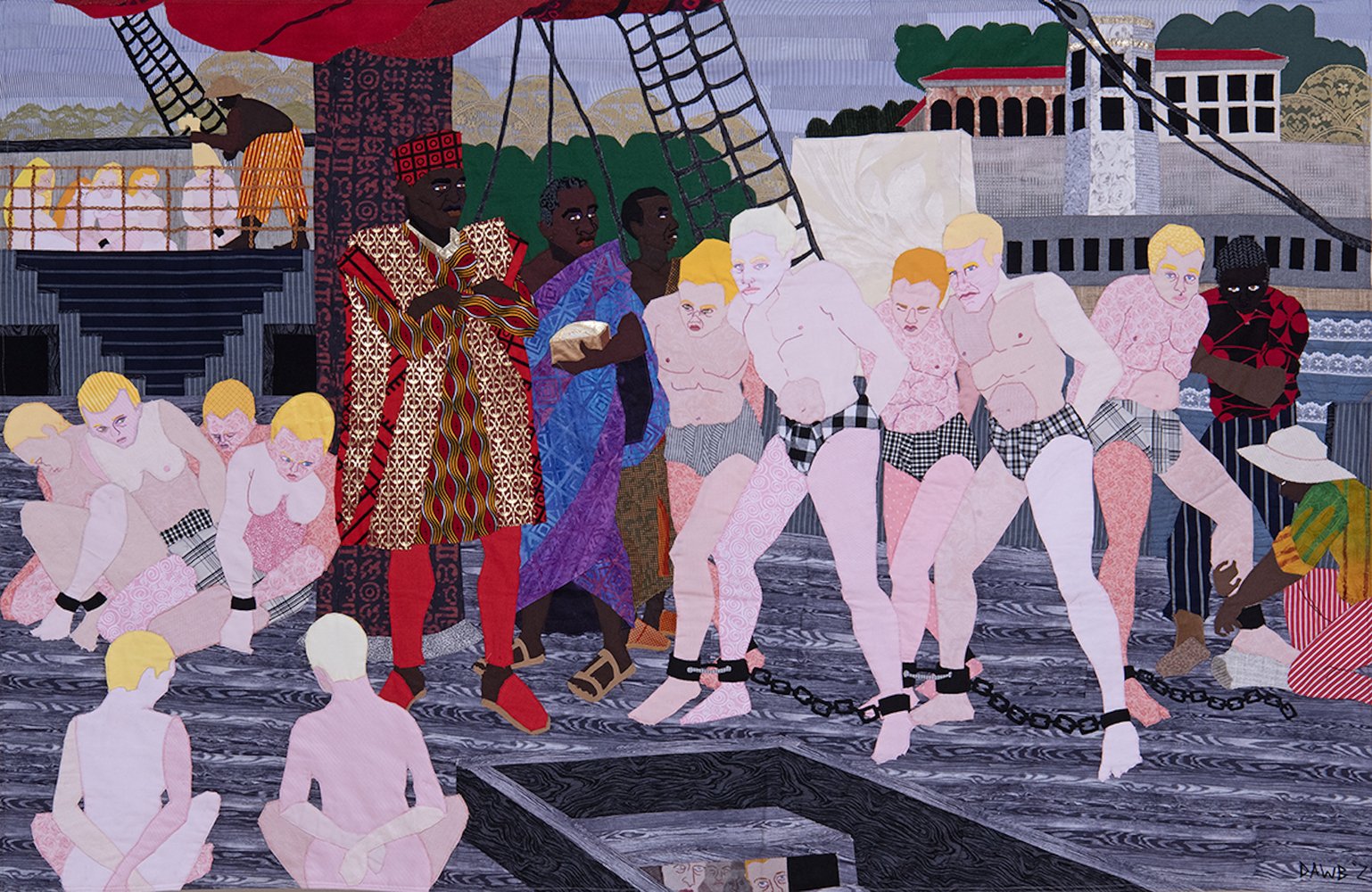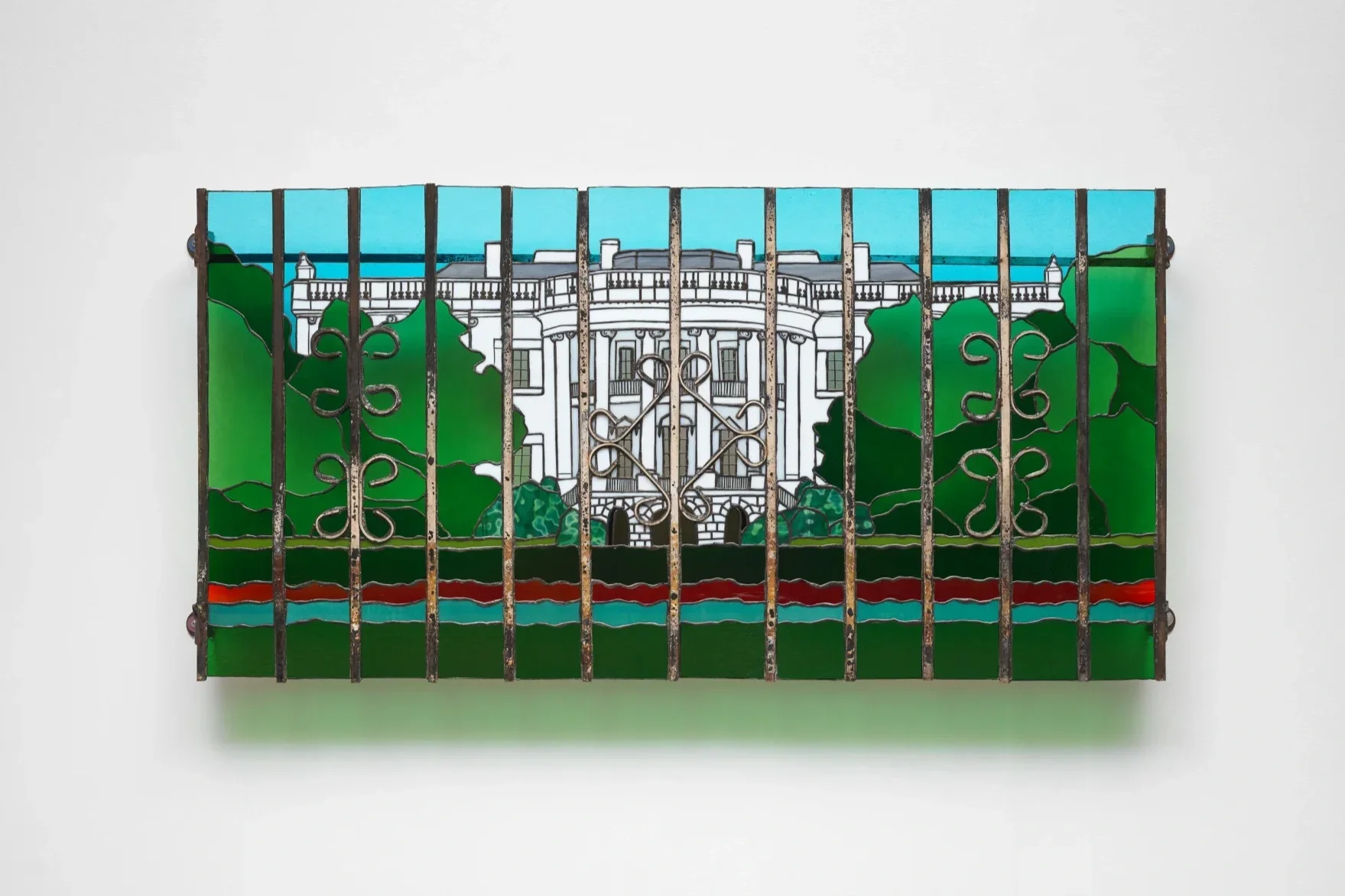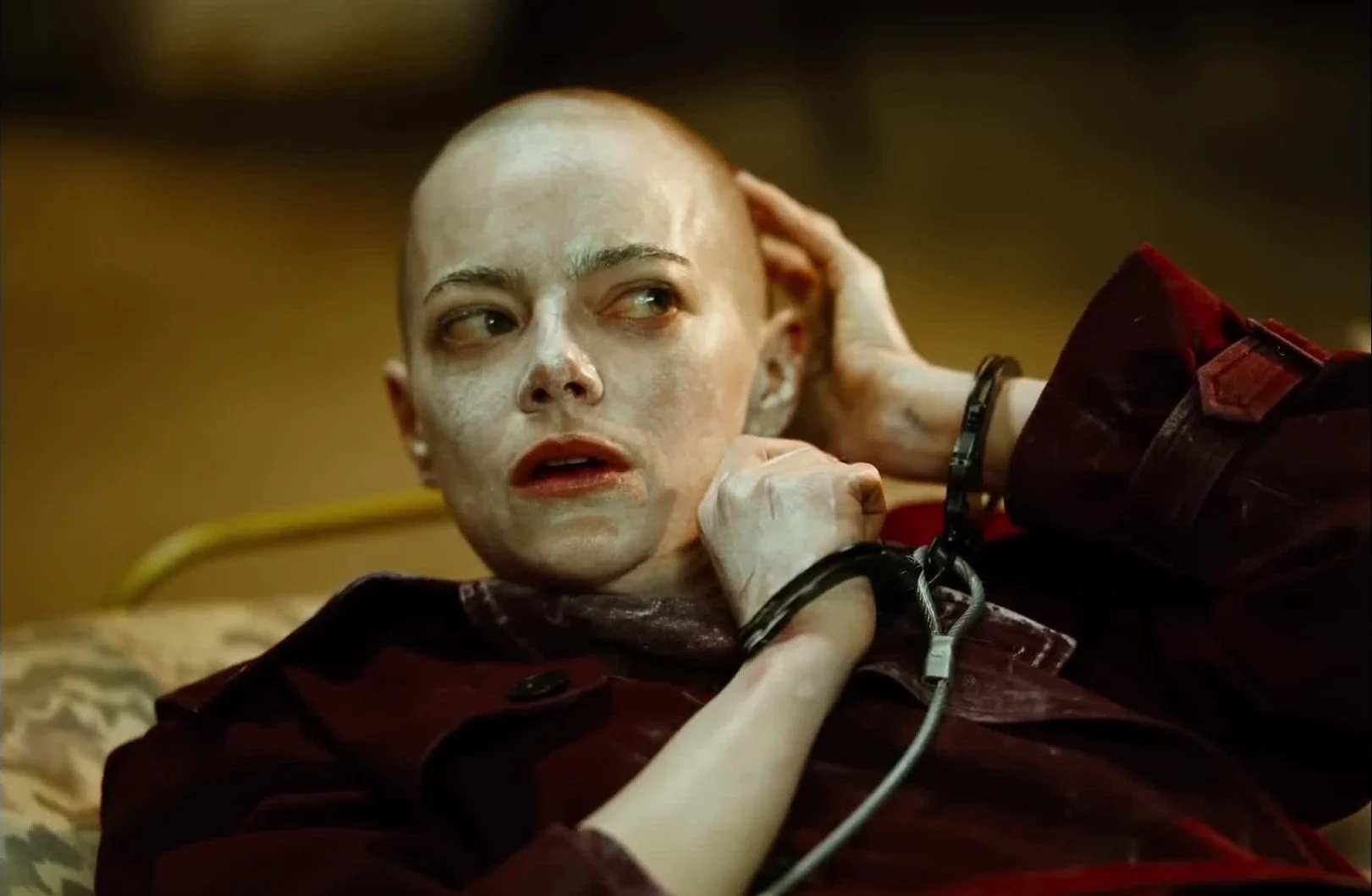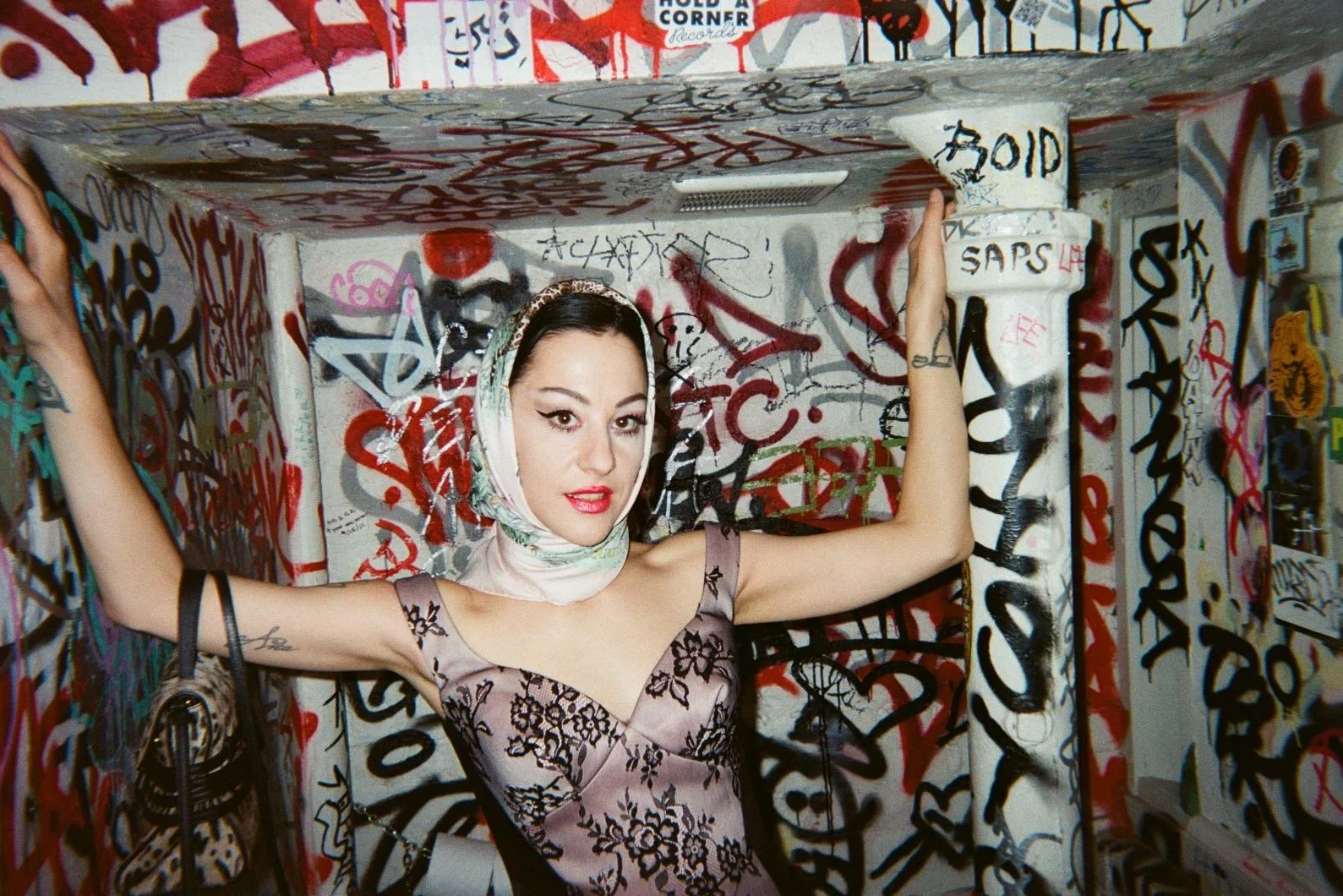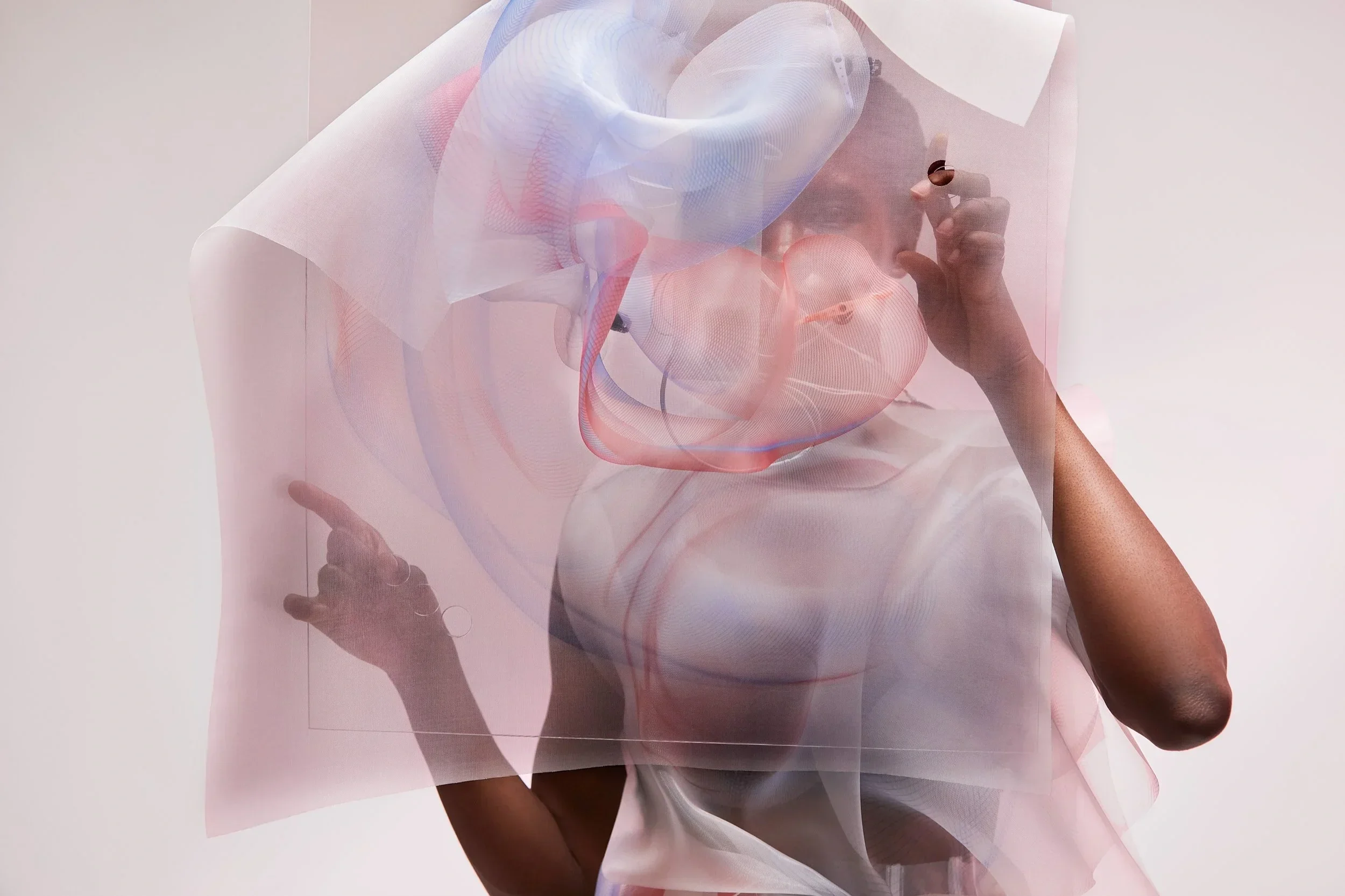The Sacred and The MUNDANE: An Interview of URS FISCHER AND MADELINE HOLLANDER
interview and text by OLIVER MAXWELL KUPPER
photographs by ADARSHA BENJAMIN
In one of life’s real-world situational comedies, I found myself with Jeffrey Deitch wondering where to sit for this interview while nine contemporary office chairs swiveled busily and balletically around his gallery. Some of the chairs approached us timidly and curiously, like newborn fauna in a temperature controlled safari. In PLAY, which is on view now at Jeffrey Deitch Gallery in Los Angeles, the Swiss artist Urs Fischer explores the existential humor of postmodernity and its mundane relics of labor, symbolic of productivity in an era when the office has become a sacrificial temple of self worth. The title of the exhibition, PLAY, is more a protest than a call to action. But to Urs, the artwork isn’t so much a statement about the zeitgeist, it’s about our own projections. Embedded with complex artificial intelligence, sensors and other technology – along with behavioral and personality markers programmed from choreography by Madeline Hollander – the chairs vary between Busby Berkeley-like formations and random patterns depending on their interactions with the audience. Over time, they will become more graceful and earn more humanlike behaviors, thus blurring the line between Relational Aesthetics and Relatable Aesthetics; art on the horizon of cobotics and autonomy. We got a chance to sit down with Urs Fischer, Madeline Hollander and Jeffrey Deitch to discuss PLAY (this is a condensed excerpt, the full interview will be available in our Summer 2019 issue).
OLIVER MAXWELL KUPPER: [Urs] So, there's a relational aesthetic to your work…
URS FISCHER: I think every artwork has a relational aesthetic to it. If you look at the Mona Lisa, it’s about the people looking at the Mona Lisa, for example, and what they bring into the artwork.
JEFFREY DEITCH: It's one of the principles of Marcel Duchamp; that the viewer completes the work of art.
OLIVER MAXWELL KUPPER: But space also becomes material too, in a way, space sort of becomes the medium. With the choreography, space becomes a third invisible element.
MADELINE HOLLANDER: Everyone has a radius or a type of orbit of sensing, and you have a spacial awareness. So if you have a spacial awareness to an object, like a work of art that’s on a 2D plane or a sculpture around a 3D plane, then you're either going to be walking around it or approaching it and that happens with all these chairs in a similar way, but they are also doing that to you. So it allows for a lot more questioning, and just as much variety, like you said before in the previous piece—like there’s the amount of projection and kind of narrative that you can project, and meaning, and personality, and an interaction and emotion you can kind of see in that space between the moving chair and the moving body is kind of endless depending on how you felt when you entered the gallery.
JEFFREY DEITCH: One of the key elements of sculpture is negative space. So you look at say an Anthony Caro sculpture: the negative space is just as important as the actual positive space forming the sculpture. So here, with the chairs, we have the negative space totally engaged by the work. And I find that fascinating. The negative space really becomes a big force. And it's changing all the time.
OLIVER MAXWELL KUPPER: What about sculpture of the AI generation?
URS FISCHER: Yeah, exactly. The chairs don’t think much or learn from past moments. I mean we do have a recording of all these movements and responses—we have backlogs of everything and we have cameras that show the position of people in space. But it’s not automatic yet.
MADELINE HOLLANDER: I mean, that’s not happening automatically, but we’re taking all the data from each event and reprogramming manually.
URS FISCHER: It will be automatic eventually.
MADELINE HOLLANDER: It’s happening in chapters.
URS FISCHER: You see, I don’t know if it makes it better if it could do these sort of things yet. We had it in New York and we were happy that the chairs moved at all. There was a lot missing and it was like half a year of a lot of work technically and cleaning up all the software. Ultimately, it’s the story you bring; that you relate to these relatively advanced but ultimately dumb things...they move and my hope is that there are similarities. They have their patterns like we all have patterns...and the patterns also disintegrate in front of you. It’s more for me about the idea that you always want to understand everything, categorize, be part of it, and it always shifts.
MADELINE HOLLANDER: But even to have the realization that in projecting this narrative and these stories and having these moments of empathy, but then also seeing that it is an office chair. Also realizing that they are choreographing the viewers as well. There’s this funny moment when you’re walking backwards in a gallery, or you’re walking sideways, or you just did lots of circles and that wasn’t your choreography. So as you’re traversing them you kind of ignore things that seem pretty pedestrian and then you see that you’re actually doing those things and so you forget who’s mirroring whom.
OLIVER MAXWELL KUPPER: Urs, you mention the technology part is not what interests you the most – what interests you the most?
URS FISCHER: It’s interesting what’s possible, there’s a lot more I can imagine that’s not possible. Sure, it’s fascinating that you can move things. There’s always this idea: new mediums make new art. I remember the first time I had to deal with that extensively was with computer and then internet art. There was so much internet art. All the while everybody used the internet to make art. But I do think that the craziest thing is: how we get here, how we communicate and set up new systems.
OLIVER MAXWELL KUPPER: I mean its interesting the way you play with mediums and art history, because I think you respond to mediums and art history in a really interesting way...
URS FISCHER: I think some mediums are easier. But a lot of mediums overpower their work you know?
OLIVER MAXWELL KUPPER: How did you and Madeline start collaborating?
URS FISCHER: With this project. I was looking for someone to help me with movement, because I don’t know much about it. Somebody hooked me up with a choreographer and they came to the studio. I didn’t even know how the chairs would look, but the choreographer had three days of motion capture. He was improvising with these things, but then he had all this data and no idea how to use it.
MADELINE HOLLANDER: And most of it was arm-based movements...and I was like that’s not going to work! (laughs)
URS FISCHER: But it kind of helped us to understand that this was totally the wrong way to go. And then, we realized that we really need somebody that understands behaviors. That’s when Madeline’s name came up. Also, looking at what you do and you have a certain proven system.
MADELINE HOLLANDER: I studied cultural anthropology at Columbia and I also have a background in professional ballet, and I have been kind of fusing those things together for a long time. But this felt like a perfect project. I have been developing a piece called “Gesture Archive” that was kind of a way of me documenting all the very pedestrian gestures and movements that you see on an everyday scale. But organizing them into a bunch of these very distinct little snippet video clips. Then, I created a database so that they are all dated, because our gestures and movements and postures are evolving constantly due to the influx of new technology and interface design. So I had this kind of base of movements that were like the Lego pieces for building these behaviors and behavior trees.
URS FISCHER: But there was movement defined before you joined, like spinning and riding off.
MADELINE HOLLANDER: Yeah there was a footing, a base—it's like orientation, speed, and footing. So there’s really only three limbs that move.
URS FISCHER: But then how was it possible to choreograph the behaviors?
MADELINE HOLLANDER: There’s infinite combinations of movements—acceleration, speed, and seat orientation—they're all kind of on a scale of either 360 or 0 to whatever the max threshold is. And there’s different ways of combining those three or four factors to create really different outcomes that you know will allow for someone to project a very specific personality. You know a whiney kid, versus someone who has a limp, versus someone who is super introverted and shy, or someone who is super outgoing and flirty. And that’s just kind of tweaking these very basic acceleration, and speed, and footing styles.
“As an avid consumer of news, you know, I’m full of anxiety. But this was never part of what was supposed to be infused in here.”
OLIVER MAXWELL KUPPER: Then all of these these behaviors were embedded into the chairs.
MADELINE HOLLANDER: So, we ended up creating this series of personality presets, like, twenty different personalities. We worked with the programmers to create these individual personalities that would get set in motion. That was a huge starting point because we could already see in simulations that interactions happen just by themselves, and then that would build upon these new behaviors, and new interactions, and then start really designing things from there. But it started in a very small, nuanced, microscale way.
OLIVER MAXWELL KUPPER: Was it always chairs?
URS FISCHER: Initially, it was one table. It was one table, but that was about fourteen years ago. So, I thought this one table – you would come in, and this table would just kind of move away from you, and then when you move away from it, then it might go back in the middle. It’s almost, like, kind of, you know, it just responds. Initially, I thought, it must be really simple (laughs). When the idea came back out of the drawer, I found different objects. But, the point is that these chairs have wheels and it can spin. There’s so much movement already built in that it’s clear. It’s simple. And then, the cost is the next factor, to engineer all of this, fit the technology in one chair and make it work. To do that nine times, I just couldn’t afford that before.
MADELINE HOLLANDER: But, in a way, it’s almost like all these chairs come from that table. That’s their homebase.
URS FISCHER: Yeah, they come from that table; it’s their homebase. And, what we did is we did variations in colors and different configurations; armrests, no armrests, headrests, some are a little angled. If you put them next to each other there’s still variety. It’s not like nine grey chairs that look exactly the same––which could be kind of cool, it would be a little more frightening, maybe.
OLIVER MAXWELL KUPPER: You sort of like that reaction to your work sometimes. That frightening feeling; that uncanny valley feeling. They’re so robotic but they’re also very human-like. Or is that just me?
JEFFREY DEITCH: Maybe you’re feeling the unease.
URS FISCHER: I see them as, like, dolphins or something. I go in the middle and it’s like, woah! I feel it has more of a playful–like puppies–a playfulness to them. I don’t come in and project some, all-around cultural negative on them, like “Oh, AI is going to take over.” As an avid consumer of news, you know, I’m full of anxiety. But this was never part of what was supposed to be infused in here.
OLIVER MAXWELL KUPPER: It’s not a statement on the zeitgeist.
URS FISCHER: The beauty about art to me is that it doesn’t have to be one thing. I like art that’s this really ambiguous. When you don’t really notice how it’s made, even the ones that think they know make a lot of bad work, or used to make bad work. Even the Michelangelo sculptures, they’re not all equally good, and it’s like, why did he do it better here than there? I never understand, even Gian Lorenzo Bernini, between his 23rd and 26th year of age was better sometimes than others, even when it was probably from the same time period. You just never really understand why it comes together, and that’s what’s cool about art, you see. Why I think it still has a value post its conceptual or visual things that it puts out. We live in a time when this gets quickly devoured and integrating in any form of communication, it goes very quick. But, where art still kind of holds is exactly there, where it stays in history.
JEFFREY DEITCH: I think it’s very interesting to mention that I was so intrigued by this project when it was first mentioned to me. I visited the studio at one point when the project was in development several years ago, and I suggested that I know someone who is a top executive at Google and maybe we can make an introduction to the people who were developing the self-driving cars. So, I made this introduction and just left it for for Urs and them. But, it didn’t really go anywhere…
OLIVER MAXWELL KUPPER: I want to talk about, sort of, the mundane and the fantastical, because the chair comes up a lot. What does the mundane mean to you.
URS FISCHER: Chairs just work. I mean, it’s made for the human body. It’s an extension of your body if you use it. You know, you can say a chair is like an instrumental version of a song; you don’t always want to have to hear somebody complain about their love life. Sometimes you just want to hear a melody.
PLAY will be on view until June 15 at Jeffrey Deitch, 925 N Orange Dr, Los Angeles, CA 90038. Click here to subscribe to AUTRE to receive four issues of AUTRE, including our current issue and Summer issue where the full version of this interview will be published.





